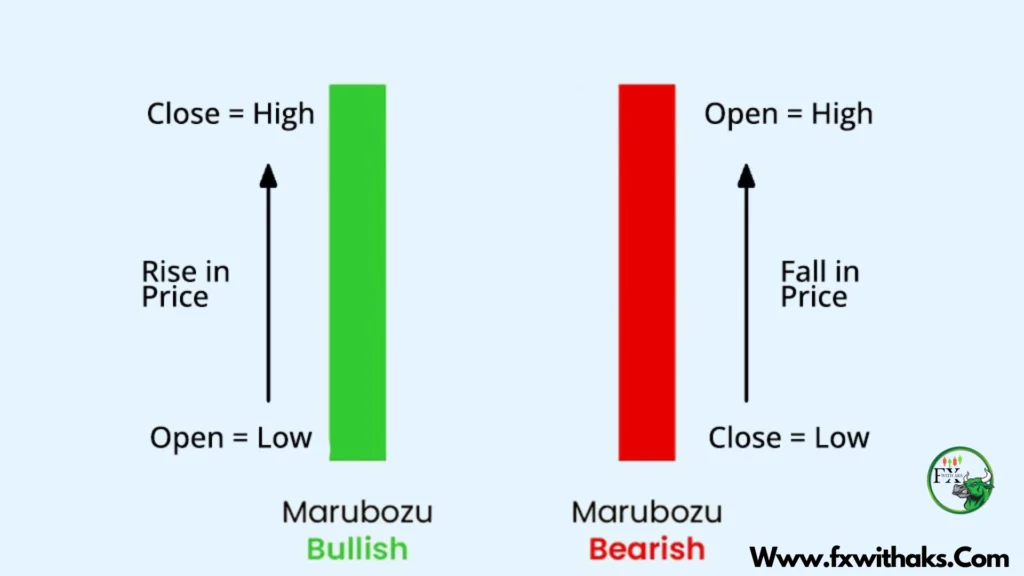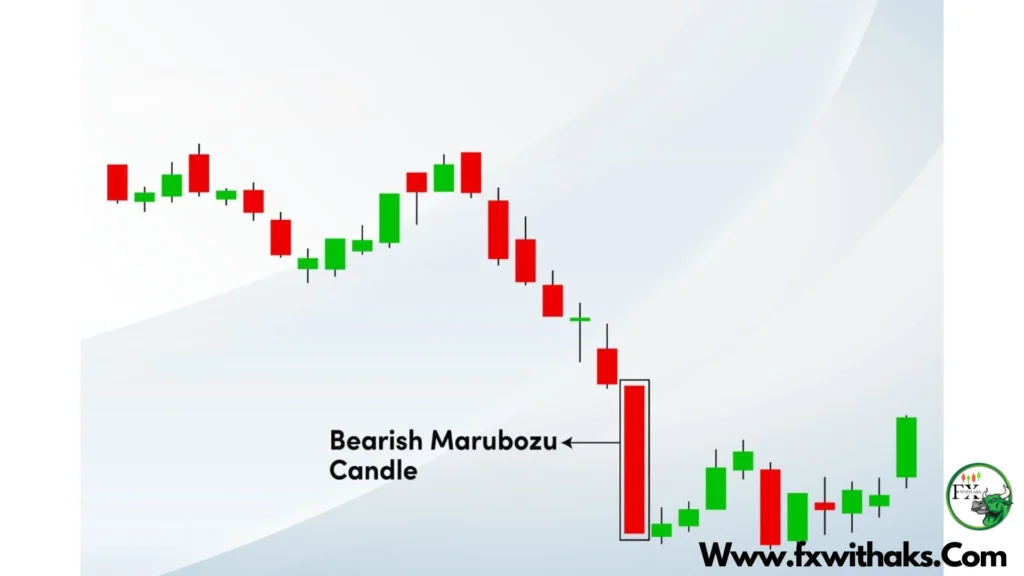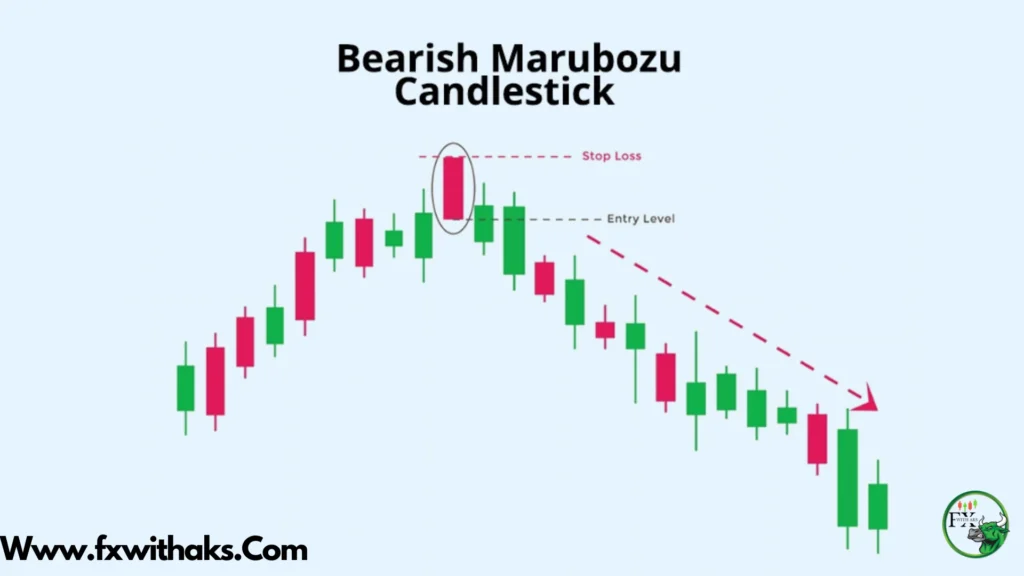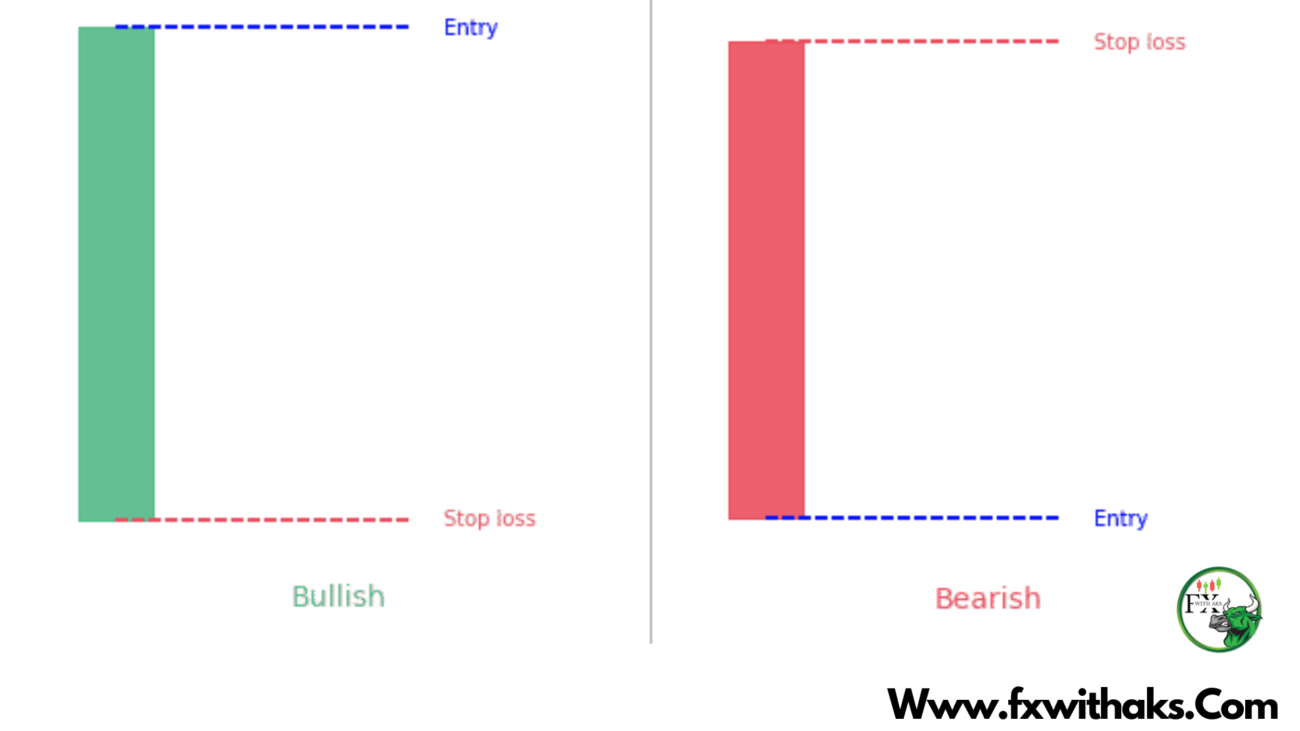A Bearish Marubozu is a type of candlestick pattern in technical analysis that signals strong selling pressure and can indicate the start of a downtrend or continuation of a bearish move.

Key Characteristics:
- Long red (black) body: The candle opens at the high and closes at the low of the session.
- No wicks (or very small ones): There are no upper or lower shadows, which means sellers were in control from start to finish.
- Appears after an uptrend or during a downtrend.
What It Indicates:
- Strong bearish sentiment — Sellers dominated the session.
- If it appears after an uptrend, it can signal a potential trend reversal.
- If it forms during a downtrend, it can suggest continuation of the bearish momentum.
Example Chart Interpretation:
If you see a Bearish Marubozu on a chart:
- Consider it a warning of further downside.
- Look for confirmation from the next candlesticks or other indicators (like volume or RSI).
- Conservative traders wait for confirmation before taking action.
Want me to generate a visual of this pattern for you?

Trading with a Bearish Marubozu candlestick can be powerful, especially when used with proper confirmation and risk management. Here’s a simple guide to help you trade it effectively:
🔻 How to Trade a Bearish Marubozu
1. Identify the Pattern
Look for a long red candle with no upper or lower shadows, forming after:
- An uptrend (potential reversal)
- Or during a downtrend (continuation signal)
2. Confirm the Signal
Don’t trade the candle in isolation. Use confirmation tools such as:
✅ Next candle closes lower
✅ High volume on the Marubozu
✅ Resistance level nearby
✅ Bearish indicators (e.g., RSI turning down, MACD bearish crossover)

3. Entry Point
📌 Aggressive Entry:
Enter immediately after the Bearish Marubozu closes, especially if there’s strong confluence (e.g., resistance zone, high volume).
📌 Conservative Entry:
Wait for the next candle to break the low of the Marubozu before entering short.
4. Stop Loss Placement
🛑 Place your stop loss:
- Just above the high of the Bearish Marubozu
- Or above a nearby resistance level
This helps limit your risk in case the pattern fails.
5. Profit Targets
🎯 Use any of the following to set targets:
- Support levels
- Fibonacci retracements
- Risk:Reward ratio (e.g., 1:2 or 1:3)
🧠 Pro Tips:
- Best used on higher timeframes (1H, 4H, Daily) for stronger signals.
- Combine with other patterns or indicators for more reliable trades.
- Avoid trading solely on Marubozu in choppy or low-volume markets.
Would you like a visual or example setup on a chart?

